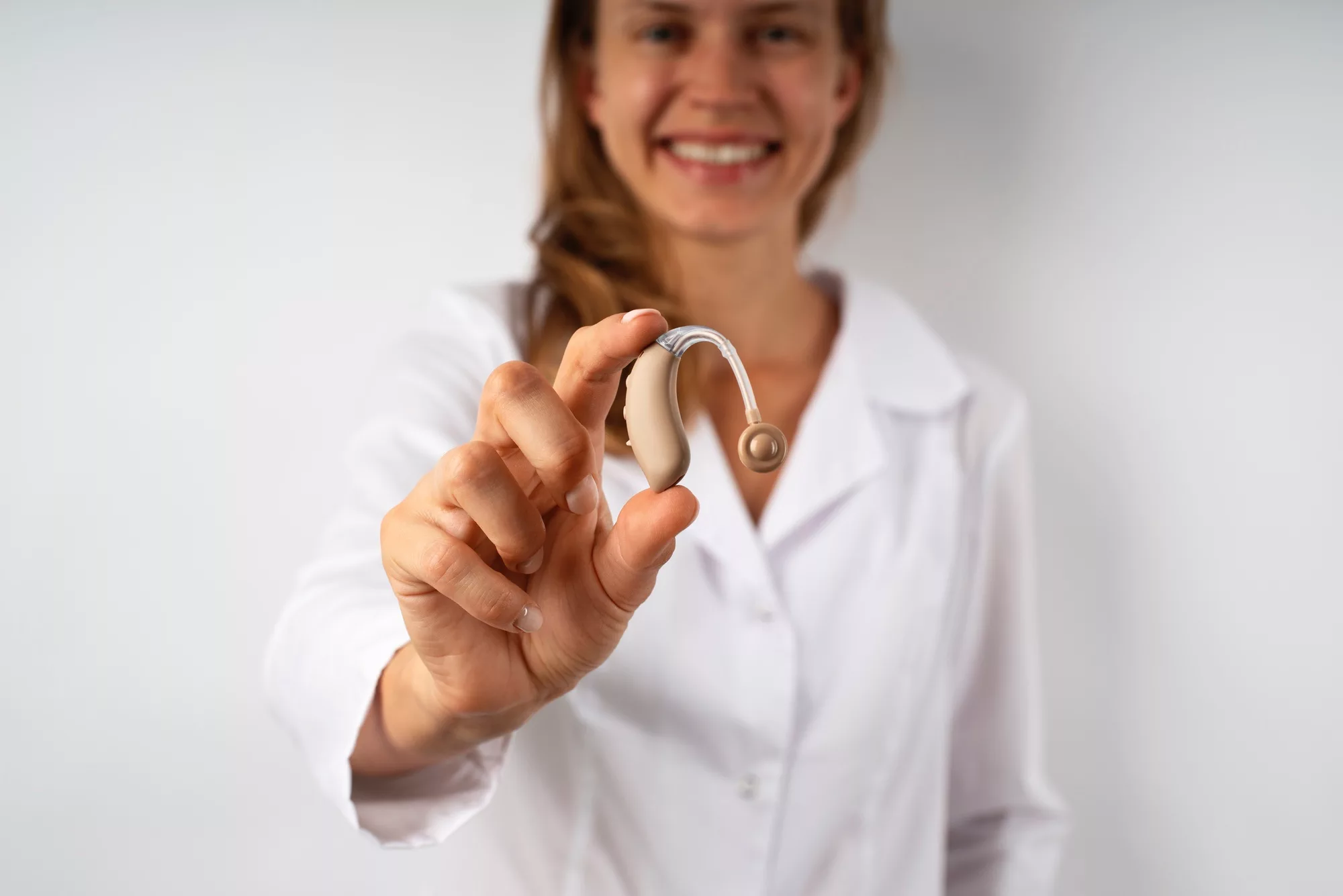
When you experience significant hearing loss, traditional hearing aids may not always represent sound accurately for you. In these cases, hearing aid implants, also known as cochlear implants, can offer a transformative solution. If you’re looking to learn more about these helpful devices, read on to discover the basics of hearing aid implants, exploring how they work, who can benefit from them, and the impact they can have for people with hearing loss.
What Are Hearing Aid Implants?
Hearing aid implants, or cochlear implants, are electronic devices designed to provide a sense of sound to individuals with various levels of more severe hearing loss. Unlike traditional hearing aids that amplify sound, cochlear implants bypass damaged portions of the ear and directly stimulate the auditory nerve, allowing wearers to perceive sound signals.
Hearing aid implants work using different components that work to transmit and amplify sound.
- External Components
- Microphone: Captures incoming sounds
- Speech Processor: Converts sounds into digital signals
- Transmitter Coil: Sends signals to the internal components
- Internal Components
- Receiver/Stimulator: Receives signals from the external components and converts them into electrical impulses
- Electrode Array: Placed in the cochlea to stimulate auditory nerve fibers
The combination of external and internal components allows cochlear implants to provide a more direct and effective method of transmitting auditory information to the brain.
Who Can Benefit From Hearing Aid Implants?
Hearing aid implants can be beneficial for people with severe to profound hearing loss for whom traditional hearing aids may not provide enough amplification of sound. Those who have experienced limited improvement with conventional hearing aids due to the nature or degree of their hearing loss may also find significant benefits from cochlear implants.
Cochlear implants can benefit both postlingual and prelingual individuals. Postlingual wearers have acquired language skills before hearing loss, while prelingual wearers develop language skills after receiving the implant.
Cochlear implants are suitable for both children and adults. Early intervention with cochlear implants in children is often associated with improved speech and language outcomes.
The Cochlear Implant Process
Evaluation and Candidacy: Audiological and medical evaluations assess the degree of hearing loss, the health of the ear, and overall suitability for cochlear implantation.
Surgery: A surgical procedure is performed to implant the internal components of the cochlear implant. This is usually done under general anesthesia, and the surgery is generally considered safe with a high success rate.
Activation and Programming: Several weeks after surgery, the external components are activated, and the speech processor is programmed. This involves adjusting settings to ensure optimal sound perception for the wearer.
Rehabilitation and Follow-Up: Rehabilitation and follow-up sessions are important for adapting to the cochlear implant. Auditory training and therapy help individuals develop and enhance their listening and language skills.
Benefits of Hearing Aid Implants
Improved Speech Understanding: Cochlear implants can significantly enhance speech understanding, allowing wearers to engage more effectively in conversations and communication.
Increased Auditory Awareness: The direct stimulation of the auditory nerve provides a more natural and comprehensive auditory experience, leading to increased auditory awareness.
Enhanced Quality of Life: Cochlear implant wearers may report improvements in overall quality of life, social interactions, emotional well-being, and the ability to participate in various activities.
Access to Environmental Sounds: Cochlear implants can enable users to perceive a broader range of environmental sounds, contributing to a more immersive auditory experience.
Considerations and Limitations
Cochlear implantation involves surgery, which carries inherent risks. Individuals considering cochlear implants should discuss potential risks and benefits with their healthcare team.
Individual Variation
The success of cochlear implants can vary among individuals. Factors such as the duration of hearing loss, age at implantation, and individual differences in auditory perception play a role in outcomes.
Financial Considerations
Cochlear implantation and related services can be a significant financial investment. Individuals should explore insurance coverage and financial assistance options to address associated costs.
Rehabilitation Commitment
Successful cochlear implantation requires a commitment to rehabilitation and ongoing auditory training. Regular follow-up appointments and therapy sessions contribute to optimal outcomes.
Hearing aid implants, or cochlear implants, represent a transformative solution for people experiencing severe to profound hearing loss. By directly stimulating the auditory nerve, cochlear implants offer a more direct and effective means of transmitting auditory information to the brain. The decision to pursue cochlear implantation involves careful consideration of candidacy, the surgical process, and a commitment to rehabilitation. While there are considerations and limitations, the benefits of improved speech understanding, increased auditory awareness, and enhanced quality of life make cochlear implants a helpful advancement in the field of hearing rehabilitation.
Resource Links
“Cochlear Implants” via the National Institute on Deafness and Other Communication Disorders
“Cochlear Implants” via Mayo Clinic